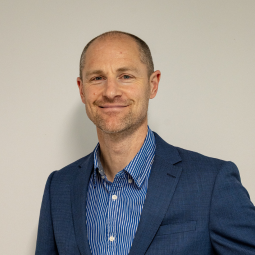
Mr Huw Pullen
Orthopaedic Surgeon
- Orthopaedic Surgery
- Self-pay/Insured
A complete rotator cuff tear will not heal and generally complete tendon tears require surgery to allow the healing process to take place. The surgery can be performed either arthroscopically (keyhole surgery) or through an open technique.
The majority of procedures are performed arthroscopically, as this minimises potential risks and complications, reduces postoperative pain and hospital stay and also allows quicker rehabilitation. It should be recognised however that this is a technically demanding procedure requiring specialised training.
The surgery involves stitching the torn tendon back to the bone from which it has been detached (humerus). In order to secure the tendon to the bone, the sutures are connected to metal/bio absorbable anchors which are embedded into the bone. This provides a secure fixation point. The sutures are then passed through the torn tendon, which is then tied back to the bone. Up to five anchors may be required to achieve a satisfactory fixation of the tendons, such that it is attached back to its original footprint on the bone.
The operation is performed under general anaesthetic. The operation is generally performed as a day case or overnight stay if performed late in the day.
Four to five small wounds (0.5cm) are required to place the arthroscope (camera) into the shoulder, together with the instruments to perform the operation.
As part of the procedure, a subcromial decompression is also performed (see above), to allow more space for the repaired tendons to move, once rehabilitation is commenced.
In order for the tendons to heal, the arm will be immobilised in a sling for at least 3 weeks before the shoulder range of movement is re-established. During the initial period many patients experience significant sleep disturbance and regular analgesia is likely to be required. A strengthening programme is subsequently employed usually allowing light weights 6-8 weeks post surgery. Rehabilitation my continue for 6 months following the procedure. Commitment to the physiotherapy programme is fundamental to the success of the surgery.
95% of patients undergoing arthroscopic rotator cuff repair are satisfied at their 3 month follow-up.
If a tendon is partially torn then either the tear will be simply debrided and or it may be completed to allow a formal repair to be performed. Often the decision is not made until the tendon injury has been directly visualised with the arthroscope (camera). Your surgeon will discuss the rationale for treatment before the operation. It should be recognised that if a formal repair is undertaken, there is a necessity for a sling for 3-4 weeks post intervention. A subcromial decompression will generally also be performed.

Our transparent pricing and bespoke packages allow you to pay for the treatments and services you need, when you need them.

Many of our dedicated consultants have partnered with insurance companies to give you peace of mind with your health.
For more information call one of our friendly patient advisors or book online using the button below.